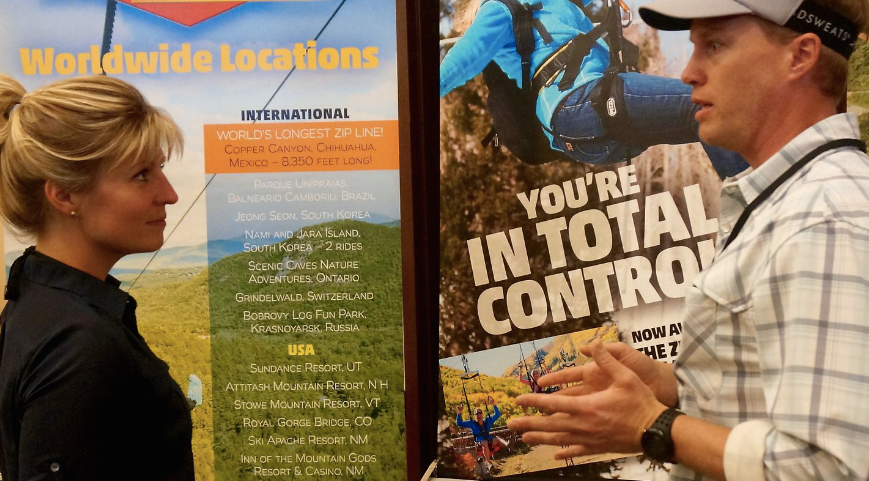
Xola goes to Summer Ops Camp!
School is back in session and so is Xola University. Earlier this month, I was invited to Ski Area Management’s (SAM) annual Summer Ops Camp and give a crash course on strategic marketing. What is Summer Ops Camp, you ask? Allow me to explain…
Summer Ops Camp offers a forum for ski industry professionals from around the country (and abroad) to get together and openly discuss what’s working and what isn’t. It’s the kind of environment where you sit down to enjoy your steak and potatoes but 45 minutes later, you’re enveloped in a conversation with someone you’ve never met that just happened to sit next to you.
Teaching is one of the most rewarding parts of my marketing role at Xola, and so is learning. As you can imagine, therefore, Summer Ops Camp was my idea of the perfect work trip: presenting to a room of ski industry veterans and digesting a stream of new ideas from all of them too.
Before recapping some of the highlights from the conference, I have a small PSA: If you work in the ski or zip line industries and don’t read SAM, or its sister publication, Adventure Park Insider, I give you permission to stop reading this blog post so you can bookmark them–so long as you return swiftly!
All right, now back to what happened at this year’s Summer Ops Camp.

Industry snapshot: Zip tours and aerial adventure parks
I have one word for you all: Growth.
One of the most notable themes in the conference was the confirmation that challenge courses and zip rides are booming, while zip line and canopy tours are increasing at a more modest rate.
Challenge courses often include obstacles like bridges, ropes, swings, walls, and more. Zip rides are one-off versions of a zip or canopy tour. Whereas a zip or canopy tour ranges from six to twelve lines on average and is typically guided, a zip ride happens on one line and may have staff helping at the beginning and end.
Whether you’re a ski resort expanding into summer operations or a fully-fledged aerial adventure park, it’s an exciting time to be in the industry. But all this expansion also means more competition for existing businesses.
Take for instance this dramatic shift in the market size of your average zip tour. According to Paul Cummings from Strategic Adventures, people used to drive up to four hours to visit a zip tour. Now, that’s dwindled to an hour.
Part of the problem is that zip tours attract a considerably low percentage of repeat business. Cummings estimates that only 10% to 15% of people will return for another zip. You might mitigate this if you’re part of a destination that attracts a steady flow of visitors. But that doesn’t solve the whole problem.
Zip lines tend to be a “bucket-list item.” Few people will take a tour once in Louisville and another time in Columbus. As zip lines become more mainstream, even the tourists in your market may become inaccessible.
Aerial adventure parks, on the other hand, see at least half of their customers coming back again. These obstacle courses test people’s skills, tempting them back to see what they can conquer with every new attempt. With this in mind, it’s no surprise that the number of adventure parks grew an estimated 40% between 2014 and 2015, while zip and canopy tours grew by just thirteen percent.
Some have looked to Europe for guidance. There, the zip tour and aerial adventure park industry there is about two decades advanced from the one in North America. European businesses are beginning to consolidate beneath larger operators. With hundreds upon hundreds of canopy tours, adventure parks, and zip rides in the U.S. and Canada, a similar fate might await.
Until next time…
That was just one sliver of the knowledge coming out of Summer Ops Camp. Join us next year to get a front row seat on all the action!
And if you have any other questions or suggestions for us at Xola University, just hit that blue “Subscribe” button on the right and let us know what business, marketing, or technology question keeps you up at night.
Xola University, curing insomnia one tour operator at a time. 😉




